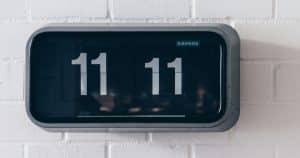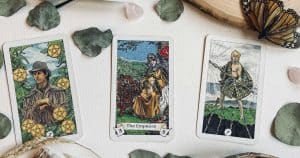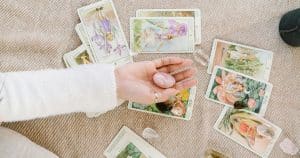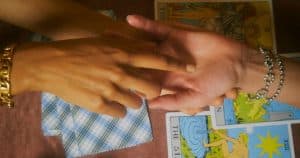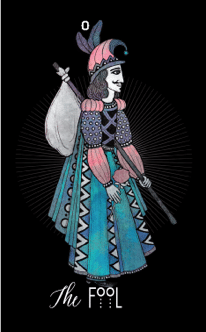The ancient Chinese practice of feng shui has been around for thousands of years. In our ultimate basic tutorial guide, learn about what feng shui is, where it came from, and feng shui tips that you can use in your daily life, as well. Connect with a gifted feng shui reader today here at Keen.com. We offer readings, advice, and in-depth analyses!
What is Feng shui?
Feng shui is a philosophical belief system and practice that is based around the idea that one most choose “conscious occupation” and blend harmoniously with one’s surrounding space. By doing so, one is able to attract positive energy and frequencies to all who exist within that space at any given time. This can range from thriving health to good fortune.
The language root for “feng shui” is based on the Chinese words for wind (fēng) and water (shuǐ). A rough English translation would define feng shui as “the way of wind and water.”
Feng shui focuses on the harmonious balance of Yin and Yang energy at all times in order to create a sense of equilibrium and positivity. Feng shui fluidly blends Yin energy—traditionally associated with female energy—with Yang energy—traditionally linked to masculine energy—into the perfect synthesis. This duality of opposing vibrations composes the entire universe, with Yin energy being passive and dark and Yang energy being active and light. Feng shui empowers us to work with these mighty natural forces, as well as align our innate chi (qi) with it, as well, for a healthy, prosperous, and peaceful environment.
What is chi (qi)?
Chi (qi) is a word that has been gaining increasing popularity in recent years. For definition purposes, chi is an energetic life force that runs through all living organisms. This exists within all nature and human beings.
The history of feng shui
For thousands of years—perhaps dating back as far as 3,000 to 6,000 years—feng shui has been a philosophical discipline practiced by Eastern traditions. While the exact origin of the tradition is debated, it is known that it originally had been deeply interconnected with ancient Chinese astrology, metaphysics, and spirituality. Because some of the symbols have even been found in both Buddhism and Taoism art and work, feng shui may have also been born out of these traditions most directly.
Centuries ago, the Chinese discovered the revelation of the magnetic compass—which revealed the invisible magnetic energies running through the planet. This has also come to be known as “the Chinese compass” and the “feng shui compass.” While initially used as a tool for divination, it was eventually used to help reveal the best location for objects at different times—whether for tombs or burial sites or constructing architecture or gardens—and more commonly where to place possessions.
Classical feng shui split into multiple schools of thought, with two of the most common ones being the form branch—primarily focused on the ideal location for gravesites—and the compass branch—which taps into the cardinal directions.
Form feng shui—or landscape feng shui—is one of the most ancient techniques and also takes into account the topography and form of the land. This also includes the geographic features (such as bodies of water, valleys, mountains, nature, roads, buildings), the flow of the water, and the direction of the wind. It also integrates the time of an individual’s birth, death, and burial.
The compass branch hones in on the eight cardinal directions and utilizes a disc inscribed with mathematically formulas—a luopan—to measure chi (qi). Furthermore, the compass branch of feng shui split into two different ideological systems, too, known as the Yin house and the Yang house. The Yin house focuses upon burial sites for those who have passed, while the Yang house is concerned with living spaces for those who are still present.
The practice of feng shui today
As time has progressed and people have immigrated, done business with regions far and wide, traveled, and built new lives elsewhere upon the globe, the initial principles of feng shui have proliferated, as well.
In modern China, feng shui is still actively used in regards to big decisions such as the building or designing of buildings. However, people worldwide have also begun to realize that feng shui can be utilized when deciding one’s interior design and layout for a beautiful and positive environment. Not only are the ideas of feng shui used in personal spaces, but can be used in public ones and office locations, as well.
As feng shui has continued to grow in popularity beyond the East to inspire the West, interior designers have become more knowledgeable about how the minimalistic style of feng shui can also influence one’s mood as it promotes a relaxing atmosphere.
Modern feng shui has taken traditional Chinese ideas, borrowed them, and advanced them in unique and exciting ways. Some of the most popular techniques are the aspirations method and new age feng shui. New age feng shui is also known as western feng shui, intuitive feng shui, or modern feng shui. This style allows one to arrange environments simply by their intuition and instincts, usually making design choices by how they feel in regards to objects and their elemental associations. Sometimes design choices can include gemstones, crystals, figurines, talismans, tapestries, and aromas.
Is feng shui a religion or spiritual practice? Is feng shui evil?
Feng shui is not a religion or an explicit spiritual practice. Feng shui is also not evil. It is a philosophical discipline that can be utilized regardless of one’s religion, culture, background, or belief systems. It is a way of connecting to the natural energy of life, the forces of Earth, and the cosmos.
In the same regard, the belief in chi (qi) is also not evil, either. Chi (qi) is similar to the belief in one’s breath of life, the soul, Ki, Aether, Prana, Pneuma, and beyond. Many cultures across the world have formulated their own particular vision on what this unifying central force is that sustains one’s life, health, wellbeing, and vitality.
The basic principles and rules of feng shui
The ancient Chinese believed in the five elements—or five forces—which aligned with the concepts of Yin and Yang. They are Wood (Mù), Fire (Huŏ), Earth (Tǔ), Water (Shuǐ), and Metal (Jīn). The key to manifesting positive feng shui is to fully balance all five of these elements in a fluid and peaceful way. To do so is what ultimately creates positive feng shui.
The Wood element composes the following qualities: expansiveness, upward movement, and vitality. It feeds the Fire element. Its shapes are: rectangular or columns. Its colors are: blues and greens. Its season is: spring. The areas of life it rules are: wealth and the family.
The Fire element composes the following qualities: passion, brilliance, and illumination. It produces the Earth element. Its shapes are: triangular and pointy. Its colors are: red. Its season is: summer. The area of life it rules is: fame.
The Earth element composes the following qualities: stability, self-care, and grounding. It bears the Metal element. Its shapes are: square or flat. Its colors are: brown, yellow, and orange. It symbolizes the transition between each season. The areas of life it rules are: partnerships, health, and knowledge.
The Water element composes the following qualities: downward movement, flow, and shifting natures. It nourishes the Wood element. Its shapes are: wavy and curvy. Its colors are: black. Its season is: winter. The area of life it rules is: career.
The Metal element composes the following qualities: efficiency, beauty, and precision. It collects the Water element. Its shapes are: circular or spherical. Its colors are: white and metallics. Its season is: autumn. The areas of life it rules are: children and helpful people.
While the ultimate goal of feng shui is to balance these five elements, one can choose to increase one or more of the elements in a living space if they are eager to amplify and expand those energies in their lives. This is done through a bagua map, as well as particular colors and shapes that are associated with each element.
How to use feng shui in your home
To infuse feng shui into your home or office’s interior design can be done with the insight of a bagua map. A bagua map is an octagon shaped map that functions as an energy grid. It has eight different sectors all surrounding the center. The bagua map is laid over the interior design floor plan for any space. This can also be done over an entire house. The bottom of a bagua map is aligned with the same axis as the front door or main entrance, which allows you to see which areas of the house are covered by each sector of the energy grid. Each sector of the bagua grid has individual attributes associated with it, allowing you to bring specific elements, shapes, and colors into your living space.
The eight sectors of a bagua map are as follows:
1. Lí
a. Direction: South
b. Element: Fire
c. Life area: Fame and Reputation
d. Color: Red
2. Kūn
a. Direction: Southwest
b. Element: Earth
c. Life area: Love and Partnerships
d. Color: Pink
3. Duì
a. Direction: West
b. Element: Metal
c. Life area: Children and Creativity
d. Color: White
4. Qián
a. Direction: Northwest
b. Element: Metal
c. Life area: Travel
d. Color: Gray
5. Kǎn
a. Direction: North
b. Element: Water
c. Life area: Career and Path in Life
d. Color: Black
6. Gèn
a. Direction: Northeast
b. Element: Earth
c. Life area: Knowledge and Self-Cultivation
d. Color: Dark Blue
7. Zhèn
a. Direction: East
b. Element: Wood
c. Life area: Family and Health
d. Color: Green, Blue, and Teal
8. Xùn
a. Direction: Southeast
b. Element: Wood
c. Life area: Wealth and Abundance
d. Color: Purple
How to use feng shui for balance and harmony
In feng shui, one of the most important concepts is that of the command position. It is also known as the “power position.” Knowing exactly where a command position is located in every room helps one to arrange furniture accordingly, whether that’s to decide where to place your bed or a desk.
The command position is the spot that is furthest away from the door—and not in a direct line with it. The command position can be found not only for an entire home or office—but also an individual space, too. The command position is extremely powerful—and symbolic—in feng shui because it grants you the ability to quickly and easily deal with whatever comes through the door. From your command position, you can directly view the door while not being in a direct line of it. This allows you to have ample time, space, and flexibility to handle whatever is coming through the door. On a figurative level, it’s as if any “attack” that is being launched from the entryway—whether from an enemy who is out to crush you, a loved one who simply wants you to wash the dishes, or a salesman who wants to pitch you an idea—can be intercepted by you as you see fit.
To set up a command position, you must choose the most important piece of furniture and position it diagonally across and facing the entrance of the room. The command position should also have strong support and backing behind you.
Being in a command position naturally lends itself to making one feel at ease, comfortable, and aligned with the energetic forces. To further empower your living space, you can bring in energy from your bagua map using numbers, shapes, and beyond, all symbolized by the never-ending five elements.
How to use feng shui rings and feng shui bracelets for positive energy
The concept of utilizing rings, bracelets, necklaces, and other adornments to amplify one’s feng shui has also been around for a long time. Two of the most common pieces of feng shui jewelry are certainly feng shui rings and feng shui bracelets. However: do feng shui rings and feng shui bracelets work? Let’s investigate.
As these particular pieces of jewelry have exploded in popularity due to new age feng shui, the common belief regarding them is that they help balance one’s chi (qi) and amplify particular elemental energetic forces. For instance, if someone has too much of one specific elemental energy, they may be out of balance and require a stabilizing or amplifying force.
Not only do feng shui rings and feng shui bracelets utilize particular materials—such as precious stones—they often include feng shui symbols, colors, and words. These new age tools can be used to balance one’s energies, act as lucky charms, or even provide protection against harmful energies.
Feng shui practitioners believe that one’s life experiences are directly tied to the birth elements of each individual. It is crucial to align all of them in equilibrium to enjoy a prosperous, healthy, peaceful, and joyous life. Yet, too much or too little of any particular element can bring a copious amount of problems. An example of this would be someone with too much water and too little fire, making them stagnant, lazy, and depressed. To fix this, he or she could wear a feng shui ring or feng shui bracelet to manifest the right frequency.
Can you hire feng shui experts, consultants, and practitioners?
Throughout the world, individuals that specialize in the art of feng shui can be hired for a multitude of purposes. While they can be enlisted not only for major projects like buying a house or home remodels, they can also aid you in aligning, reorganizing, or simplifying a living space or business location to promote positive energy and growth. Many interior designers have also become specialists in this practice to further diversify their offerings to clients in their area. Connect with a gifted feng shui reader today here at Keen.com. We offer readings, advice, and in-depth analyses!




